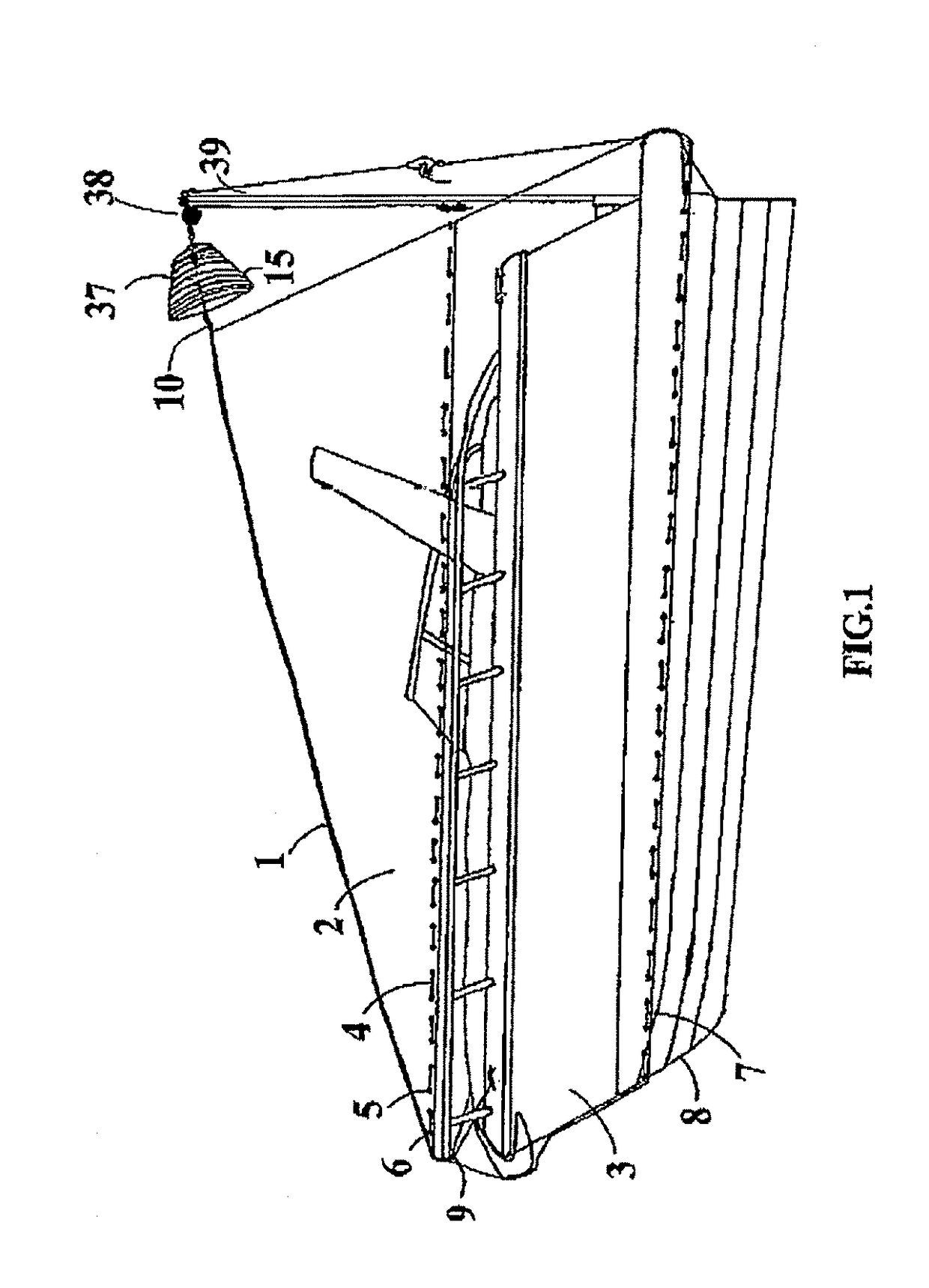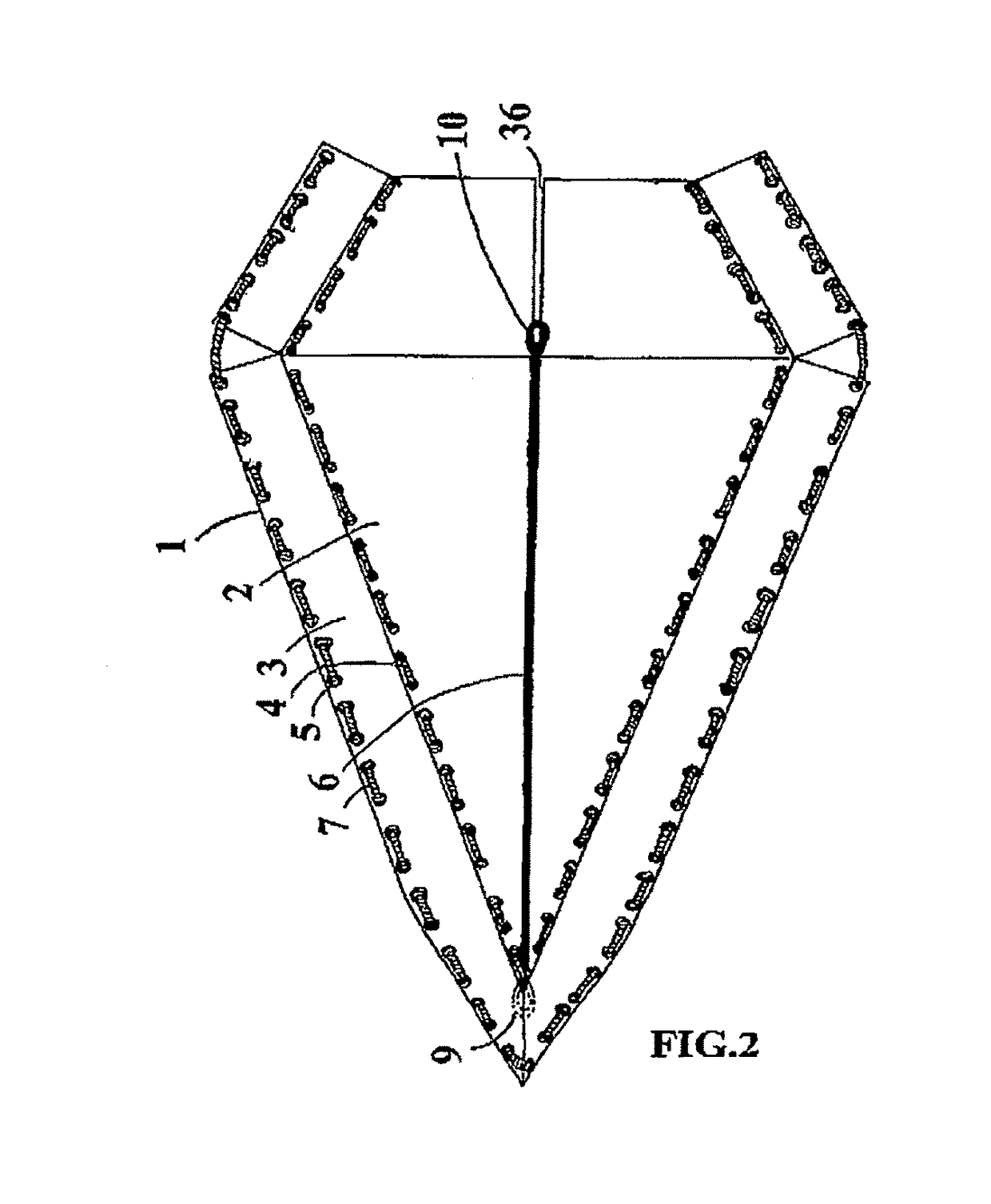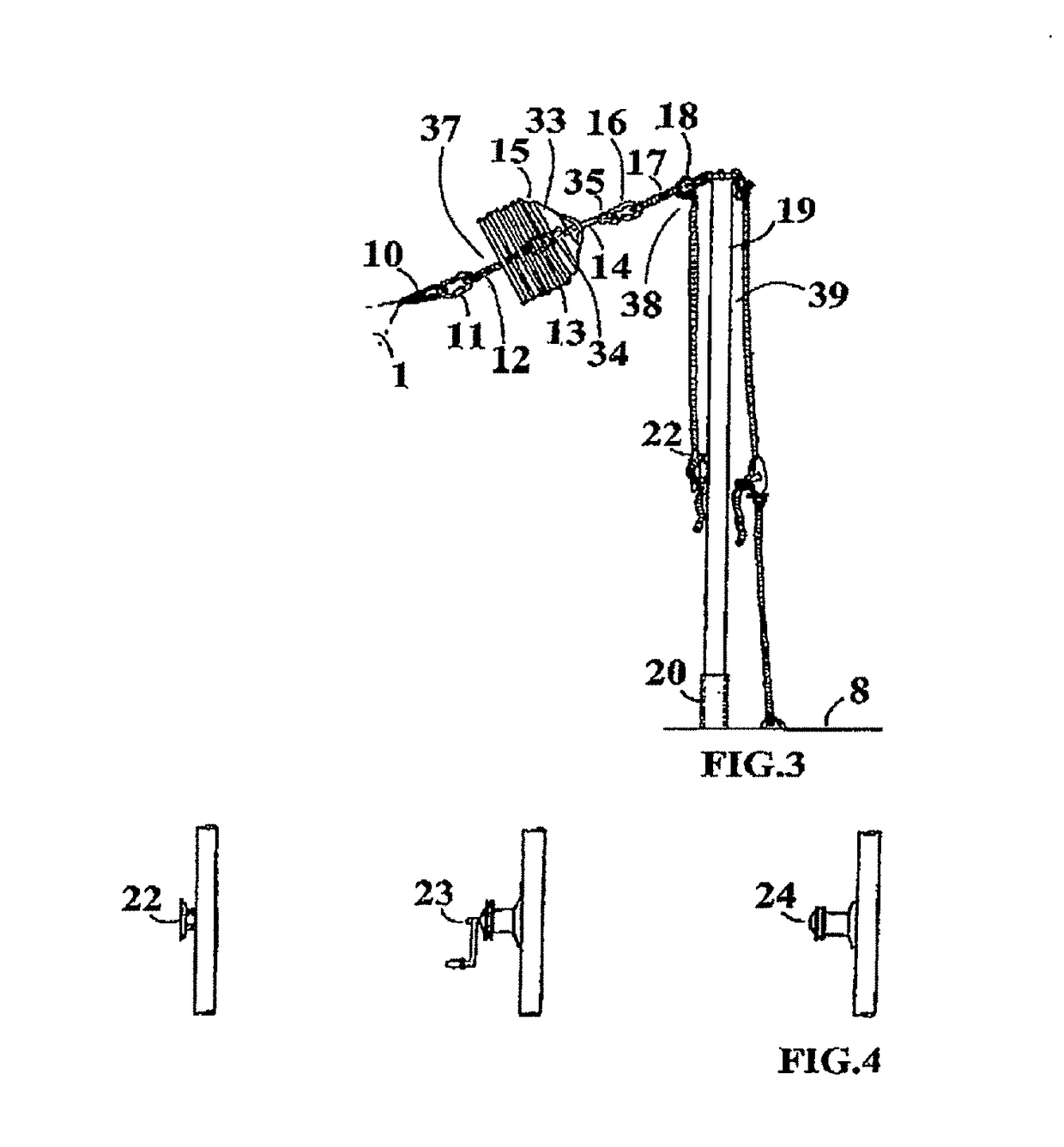Universal and rapid covering system
a technology of universal and rapid covering, applied in the direction of waterborne vessels, vessel parts, tents/canopies, etc., can solve the problems of requiring a long time and energy consumption, not easily adaptable fabric covers, and large waste of energy, so as to reduce the dimensions of the fabric cover and facilitate the storage stages , the effect of quick reduction
- Summary
- Abstract
- Description
- Claims
- Application Information
AI Technical Summary
Benefits of technology
Problems solved by technology
Method used
Image
Examples
Embodiment Construction
[0034]The invention allows use and storage of a cover in simple and quick proceedings. Features and components of the invention in a preferential embodiment will be described according to the orientation of the boat (8) showed in FIG. 1. Thus, the directional terms such as front and rear will be referred to the orientation of the boat (8) in FIG. 1. In any case directional terms are indicative and just for the purpose of description and are not intended limiting.
[0035]In FIGS. 1 and 2 is illustrated a cover (1) preferably consisting of two different fabrics. The upper one (2) preferably water-resistant and the lower one (3) preferably windproof, breathable and elastic. Fabrics are preferably made of any suitable material, including cotton, nylon and polyester. Fabrics (2) and (3) are joined together by a rigid or elastic rope (4), passing through eyelets (5).
[0036]A reinforcing fabric (6), preferably a belt, is applied on the cover (1), in correspondence with the main ridge line, on...
PUM
 Login to View More
Login to View More Abstract
Description
Claims
Application Information
 Login to View More
Login to View More - R&D
- Intellectual Property
- Life Sciences
- Materials
- Tech Scout
- Unparalleled Data Quality
- Higher Quality Content
- 60% Fewer Hallucinations
Browse by: Latest US Patents, China's latest patents, Technical Efficacy Thesaurus, Application Domain, Technology Topic, Popular Technical Reports.
© 2025 PatSnap. All rights reserved.Legal|Privacy policy|Modern Slavery Act Transparency Statement|Sitemap|About US| Contact US: help@patsnap.com



